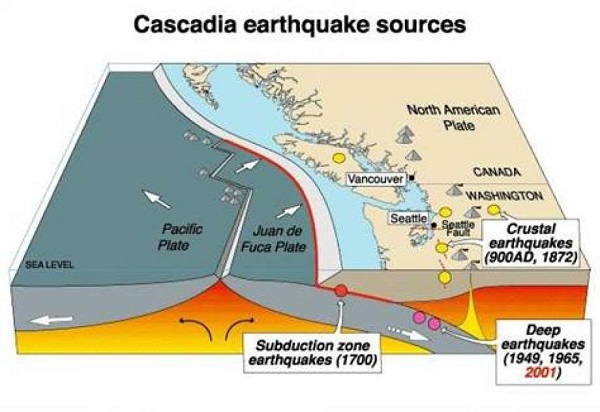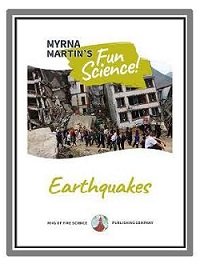What are Megathrust Earthquakes?
Where megathrust earthquakes occur
Subduction zone earthquakes
A megathrust earthquake occurs in subduction zones at convergent boundaries. Around the Pacific Ocean is a horseshoe shaped area that contains subduction zones that create megathrust earthquakes and generate tsunamis. In most of these zones a continental plate is overriding an oceanic plate because the oceanic plate is heavier and colder.
Pacific Ocean subduction zones
Subduction zones also occur around the Pacific Ocean when two oceanic plates converge. The older and colder oceanic subducts beneath the younger oceanic plate. When two oceanic plates converge island arcs form. The Aleutian Islands is an example of volcanic islands that formed in the North Pacific Ocean.
Mariana Islands trench
The Mariana Islands in the western Pacific Ocean are the site of the deepest trench on Earth. It is located near the Mariana Islands and has only been visited by three people. Today the trench is being studied by mini submarines.

Cascadia Subduction Zone where the last megathrust
earthquake occurred on January 26, 1700 USGS
2004 Indian Ocean disaster
Deadliest natural disaster
The deadliest natural disaster occurred in the Indian Ocean on the day after Christmas in 2004. People had flocked to the warm water and beaches of Thailand, Sri Lanka and Indonesia.
No tsunami warning sirens
There were no tsunami warning sirens on the beaches because tsunamis seldom occurred in the Indian Ocean. The 9.1 magnitude earthquake was located in an undersea fault that sent tsunami waves around the Indian Ocean killing over 230,000 people that day.
Banda Aceh waves
Banda Aceh was located on the northern tip of Sumatra where waves 15 to 30 meters high when they came ashore 20 minutes later where 320,000 people lived.


Click for More Information and to Order
9.0 earthquakes since 1900
Five 9.0+ earthquakes
Since 1900 there have been five magnitude 9.0 or greater earthquakes. All these events were subduction zone earthquakes. The rocks rupture as the continental plate is forced over the subducting oceanic plate. This type of movement on a fault is known as a thrust fault earthquake.
Term megathrust earthquake
The term megathrust earthquakes is commonly used by geologists when referring to great earthquakes in subduction zones because the overriding plate slips over the top of the subducting plate.
Pacific Ring of Fire
90% of all recorded earthquakes
The Pacific Ring of Fire is an area around the Pacific Ocean where oceanic plates are colliding with continental plates. Seventy-five percent of the world's active volcanoes are located in the region. Approximately 81% of great earthquakes and 90% percent of all recorded earthquakes occur on the Pacific Ocean Ring of Fire.
Cascadia subduction zone
Pacific Northwest megathrust earthquakes
The Cascadia Subduction Zone (CSZ) stretches from Vancouver Island in British Columbia southward through Washington State, Oregon to the Mendicino Triangle in northern California. It has produced megathrust earthquakes for a long period of time.
Plates are locked
The plates are locked at this time and pressure is building in this zone. Satellites are tracking the buckling of the North American Plate as it moves southwest overriding the Juan de Fuca Plate.
Past earthquakes and tsunamis
The coasts of Alaska, Washington, Oregon and Northern California are all part of the Cascadia Subduction Zones where megathrust earthquakes and tsunamis have occurred in the past and will continue to occur in the future.
Preparing for the next big one
Our family lives in the Cascadia Subduction Zone so we are preparing for a 9+ magnitude earthquake. The last time there was a megathrust earthquake it was on the evening of January 26, 1700. No one knows exactly when the locked plates will break in the future.
KIDS FUN Science Bookstore
Check out Myrna Martin's award winning textbooks, e-books, videos and rock sets. The Kids Fun Science Bookstore covers a wide range of earth science topics. Click here to browse.










